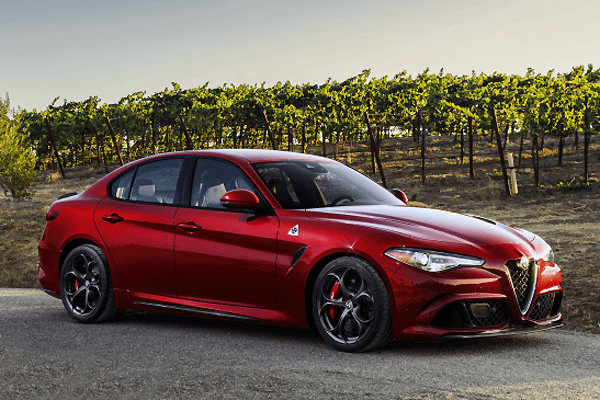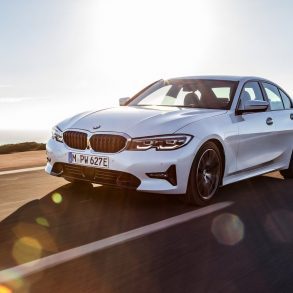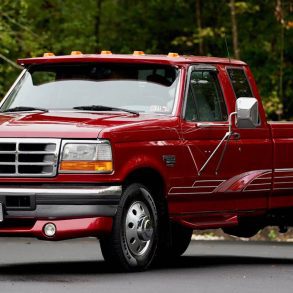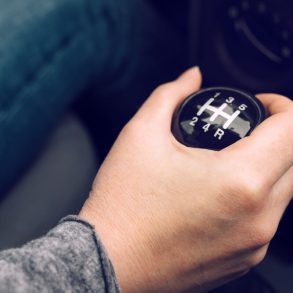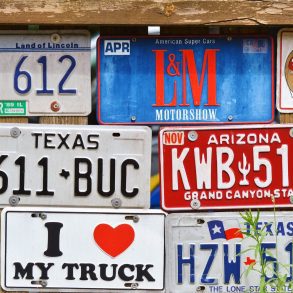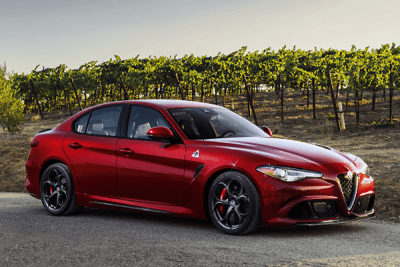 Warm welcome or cold shoulder is a new series here on CarSalesBase.com, where we discuss the sales performance of new models in their first year or so on the market. How have they performed in terms of sales: above or under expectations? What could be the reasons for their success or failure? And what do we expect for their future – will it improve or get worse?
Warm welcome or cold shoulder is a new series here on CarSalesBase.com, where we discuss the sales performance of new models in their first year or so on the market. How have they performed in terms of sales: above or under expectations? What could be the reasons for their success or failure? And what do we expect for their future – will it improve or get worse?
First we tackle the Alfa Romeo Giulia, simply because it’s one of the most talked-about launches in recent years and by far the most popular car here on CSB in terms of pageviews. As always, feel free to join the discussion by commenting below or answering the poll at the bottom.
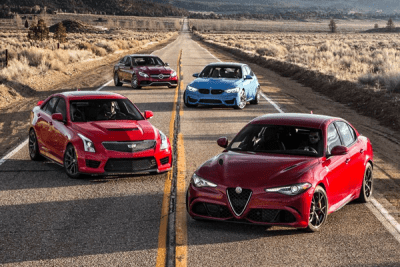 Let’s start with the US, the most difficult market for the Giulia: there have been some articles and comments across the web suggesting the Giulia is a sales failure in the US, pointing out Alfa has only sold 7.900 of them in the first eleven months of this year. Of course, that figure looks a bit bleak when compared to established models like the Audi A4 and BMW 3-Series, which sold almost 30.500 and 54.000 units during that same period. Then again, these brands and models have been around for decades which has given them great brand recognition, a faithful share of repeat buyers and not to forget a much larger dealer network (300 and 341 compared to 184). Alfa Romeo, on the other hand, has not been present in North America for nearly two decades and the few who still remember the brand mostly remember its reputation for poor quality. The US is a mature market and the midsized premium sedan segment is fiercely competitive as even an established brand like Cadillac has had trouble carving out a piece of that pie with the ATS, arguably one of the best cars it has made in a decade. So for a brand that has returned to the market after decades of non-presence, selling an average of 900 luxury sedans a month after its initial launch period is not all that bad.
Let’s start with the US, the most difficult market for the Giulia: there have been some articles and comments across the web suggesting the Giulia is a sales failure in the US, pointing out Alfa has only sold 7.900 of them in the first eleven months of this year. Of course, that figure looks a bit bleak when compared to established models like the Audi A4 and BMW 3-Series, which sold almost 30.500 and 54.000 units during that same period. Then again, these brands and models have been around for decades which has given them great brand recognition, a faithful share of repeat buyers and not to forget a much larger dealer network (300 and 341 compared to 184). Alfa Romeo, on the other hand, has not been present in North America for nearly two decades and the few who still remember the brand mostly remember its reputation for poor quality. The US is a mature market and the midsized premium sedan segment is fiercely competitive as even an established brand like Cadillac has had trouble carving out a piece of that pie with the ATS, arguably one of the best cars it has made in a decade. So for a brand that has returned to the market after decades of non-presence, selling an average of 900 luxury sedans a month after its initial launch period is not all that bad.
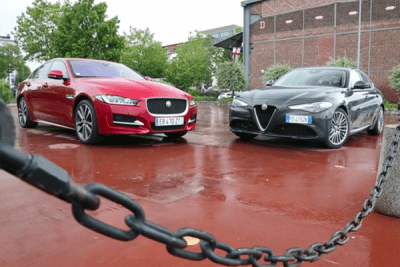 A better comparison for the Giulia would be the Jaguar XE, another premium mid-sized sedan from a lower-volume luxury brand that was launched a few years ago without a direct predecessor. What’s more, Jaguar has 163 about dealers in the US, more in line with Alfa Romeo’s figure. Jaguar sold about 8.000 copies of the XE in the US in the first 10 months of 2017, not much more than the Giulia has sold, but I haven’t heard a single voice or read a single article claiming the XE is a failure. And keep in mind the Giulia was only launched in the first quarter of this year so its deliveries didn’t pick up traction until the second quarter. From May onwards the Giulia has consistently outsold its British rival. Also, the Alfa has been hampered by some software glitches that not only delayed deliveries but also didn’t do much good to its still very fragile image, proving those critics right that have continued the image of unreliable Italian cars. Not a great way to relaunch a brand and gain confidence from buyers looking to spend upwards of $40,000 on a new car. I think the major reason for the image of “failure” is that the goals set by FCA itself had been set unrealistically high and when the sales figures did not live up to those high expectations, it was easy to call it a failure. If only the company had been a bit more humble (or even just realistic) in their projections, the Giulia would not be considered a mishap. Perhaps the MotorTrend “Car of the Year” award can help put the Giulia on the shopping lists of more Americans, even though I personally take all these different COTY awards with more than a pinch of salt and so should everybody else.
A better comparison for the Giulia would be the Jaguar XE, another premium mid-sized sedan from a lower-volume luxury brand that was launched a few years ago without a direct predecessor. What’s more, Jaguar has 163 about dealers in the US, more in line with Alfa Romeo’s figure. Jaguar sold about 8.000 copies of the XE in the US in the first 10 months of 2017, not much more than the Giulia has sold, but I haven’t heard a single voice or read a single article claiming the XE is a failure. And keep in mind the Giulia was only launched in the first quarter of this year so its deliveries didn’t pick up traction until the second quarter. From May onwards the Giulia has consistently outsold its British rival. Also, the Alfa has been hampered by some software glitches that not only delayed deliveries but also didn’t do much good to its still very fragile image, proving those critics right that have continued the image of unreliable Italian cars. Not a great way to relaunch a brand and gain confidence from buyers looking to spend upwards of $40,000 on a new car. I think the major reason for the image of “failure” is that the goals set by FCA itself had been set unrealistically high and when the sales figures did not live up to those high expectations, it was easy to call it a failure. If only the company had been a bit more humble (or even just realistic) in their projections, the Giulia would not be considered a mishap. Perhaps the MotorTrend “Car of the Year” award can help put the Giulia on the shopping lists of more Americans, even though I personally take all these different COTY awards with more than a pinch of salt and so should everybody else.
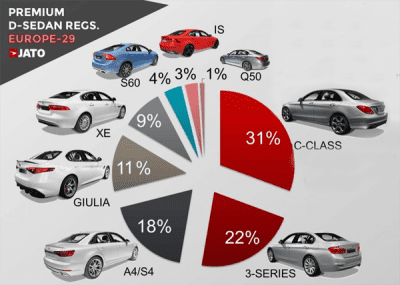 In Europe, the story is a bit different. Italian cars are traditionally known for being very dependent on their home market, with for example 80% of Fiat Panda and 64% of Alfa Romeo Giulietta coming from Italy. By comparison, just 38,5% of the Giulia‘s 19.201 European sales in the first 9 months of 2017 came from Italy, in line with the percentage of German sales for the Audi A4 and Mercedes-Benz C-Class and much lower than the 55% of European Jaguar XE sales coming from the UK. This suggests the Giulia’s appeal is better spread across the continent. The Giulia was behind the German 3 in fourth place of its segment when ruling out coupe/convertible models like the BMW 4-Series and Audi A5 and the Volvo V60 station wagon. It outsold the Jaguar XE and sold almost 4 times as many as the Volvo S60 and Lexus IS, the only other sedan-only alternatives that sell in significant numbers in Europe, where 42% of sales in this segment are station wagons and just 32% are sedans (the rest are hatchbacks like the DS5, 3-Series GT and 4-Series Gran Coupe, or coupe and convertible models). That means the Giulia only effectively competes with less than a third of its segment, resulting in an 11% market share of the premium midsized sedan segment. Not bad for an Italian newcomer in a segment traditionally dominated by the Germans and which is heavily dependent on fleet and lease orders. Those buyers often focus more on total cost of ownership than on purchase price which means resale values play a major factor, something in which the Germans are traditionally strong while the Giulia has no proven track record in that aspect.
In Europe, the story is a bit different. Italian cars are traditionally known for being very dependent on their home market, with for example 80% of Fiat Panda and 64% of Alfa Romeo Giulietta coming from Italy. By comparison, just 38,5% of the Giulia‘s 19.201 European sales in the first 9 months of 2017 came from Italy, in line with the percentage of German sales for the Audi A4 and Mercedes-Benz C-Class and much lower than the 55% of European Jaguar XE sales coming from the UK. This suggests the Giulia’s appeal is better spread across the continent. The Giulia was behind the German 3 in fourth place of its segment when ruling out coupe/convertible models like the BMW 4-Series and Audi A5 and the Volvo V60 station wagon. It outsold the Jaguar XE and sold almost 4 times as many as the Volvo S60 and Lexus IS, the only other sedan-only alternatives that sell in significant numbers in Europe, where 42% of sales in this segment are station wagons and just 32% are sedans (the rest are hatchbacks like the DS5, 3-Series GT and 4-Series Gran Coupe, or coupe and convertible models). That means the Giulia only effectively competes with less than a third of its segment, resulting in an 11% market share of the premium midsized sedan segment. Not bad for an Italian newcomer in a segment traditionally dominated by the Germans and which is heavily dependent on fleet and lease orders. Those buyers often focus more on total cost of ownership than on purchase price which means resale values play a major factor, something in which the Germans are traditionally strong while the Giulia has no proven track record in that aspect.
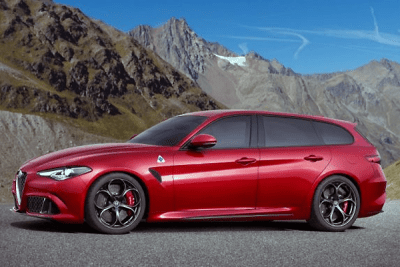 So should Alfa Romeo still consider making a Giulia station wagon, as it had for its predecessors 156 and 159? I don’t think it should, as the potential volume for that version, which would really only sell in Europe, is about 30.000 units a year. That’s not enough for a company already struggling for cash, which it could put to better use by developing a replacement to the Giulietta or a crossover below the Stelvio, especially when considering some of the SW sales probably would cannibalize on those of the sedan. Considering the premium midsized sedan segment as a whole is losing share to crossovers like the Volvo XC60, Mercedes-Benz GLC and Audi Q5, the Giulia was facing an uphill battle from the beginning, while the Stelvio is supposed to be the real money (and volume) maker. But in order to (re-)establish the Alfa Romeo brand as a sporty alternative to the Germans and a full-blown luxury brand, the Giulia was needed to give the brand credibility by proving it could compete with them in their traditional stronghold: that of midsized sports sedans in which the BMW 3-Series is still the king of the hill. That’s also why it has focused so much attention on the low-volume, top-of-the-line Quadrifoglio version with 510hp, as that version was able to beat the M3 and rivals on paper as well as on the road. The widespread critical acclaim from press and punters put the Giulia and Alfa Romeo back on the map in Europe and I wouldn’t call it a sales failure at all, even if it hasn’t met the overly ambitious goals set by Sergio Marchionne.
So should Alfa Romeo still consider making a Giulia station wagon, as it had for its predecessors 156 and 159? I don’t think it should, as the potential volume for that version, which would really only sell in Europe, is about 30.000 units a year. That’s not enough for a company already struggling for cash, which it could put to better use by developing a replacement to the Giulietta or a crossover below the Stelvio, especially when considering some of the SW sales probably would cannibalize on those of the sedan. Considering the premium midsized sedan segment as a whole is losing share to crossovers like the Volvo XC60, Mercedes-Benz GLC and Audi Q5, the Giulia was facing an uphill battle from the beginning, while the Stelvio is supposed to be the real money (and volume) maker. But in order to (re-)establish the Alfa Romeo brand as a sporty alternative to the Germans and a full-blown luxury brand, the Giulia was needed to give the brand credibility by proving it could compete with them in their traditional stronghold: that of midsized sports sedans in which the BMW 3-Series is still the king of the hill. That’s also why it has focused so much attention on the low-volume, top-of-the-line Quadrifoglio version with 510hp, as that version was able to beat the M3 and rivals on paper as well as on the road. The widespread critical acclaim from press and punters put the Giulia and Alfa Romeo back on the map in Europe and I wouldn’t call it a sales failure at all, even if it hasn’t met the overly ambitious goals set by Sergio Marchionne.
Kriss’ second opinion
I am in two minds about the Giulia’s sales performance. On one hand Bart is absolutely right – if you look at the numbers the right way Giulia’s sales figures looks pretty good for (a) a sedan (b) from a brand that needs to reestablish itself (c) in a crowded market (d) that’s losing volume to crossovers. And if you view the Giulia as a car whose main goal was to put Alfa Romeo back on the map than I would say it has actually been successful – while the sales are so-so, it is viewed as a car that can go head-to-head with the segment’s leaders, unlike for example the compromised Jaguar XE and Cadillac ATS.
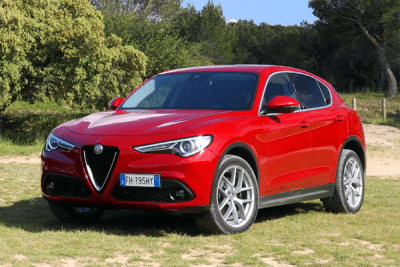 On the other hand, however, there is no denying that Alfa Romeo needs to start selling cars now that it has all but killed off the Mito and Giulietta, and in this respect the Giulia is not the success that the brand needs. As such, the acid test will come with the performance of the Stelvio SUV, a car entering a growing segment where established brand values count for less than in the traditional segments. If the Stelvio can generate volume (and profits) for the brand than this will serve as foundation for future growth. So far FCA, and Sergio Marchionne, seem to be determined to drive the brand to succeed. However, as we have seen with Audi’s, Lexus’ and Infiniti’s decades-long journeys, success in the premium segments takes a long time, and even then it is not guaranteed. The Giulia, however, remains one hell of a start for Alfa Romeo.
On the other hand, however, there is no denying that Alfa Romeo needs to start selling cars now that it has all but killed off the Mito and Giulietta, and in this respect the Giulia is not the success that the brand needs. As such, the acid test will come with the performance of the Stelvio SUV, a car entering a growing segment where established brand values count for less than in the traditional segments. If the Stelvio can generate volume (and profits) for the brand than this will serve as foundation for future growth. So far FCA, and Sergio Marchionne, seem to be determined to drive the brand to succeed. However, as we have seen with Audi’s, Lexus’ and Infiniti’s decades-long journeys, success in the premium segments takes a long time, and even then it is not guaranteed. The Giulia, however, remains one hell of a start for Alfa Romeo.

